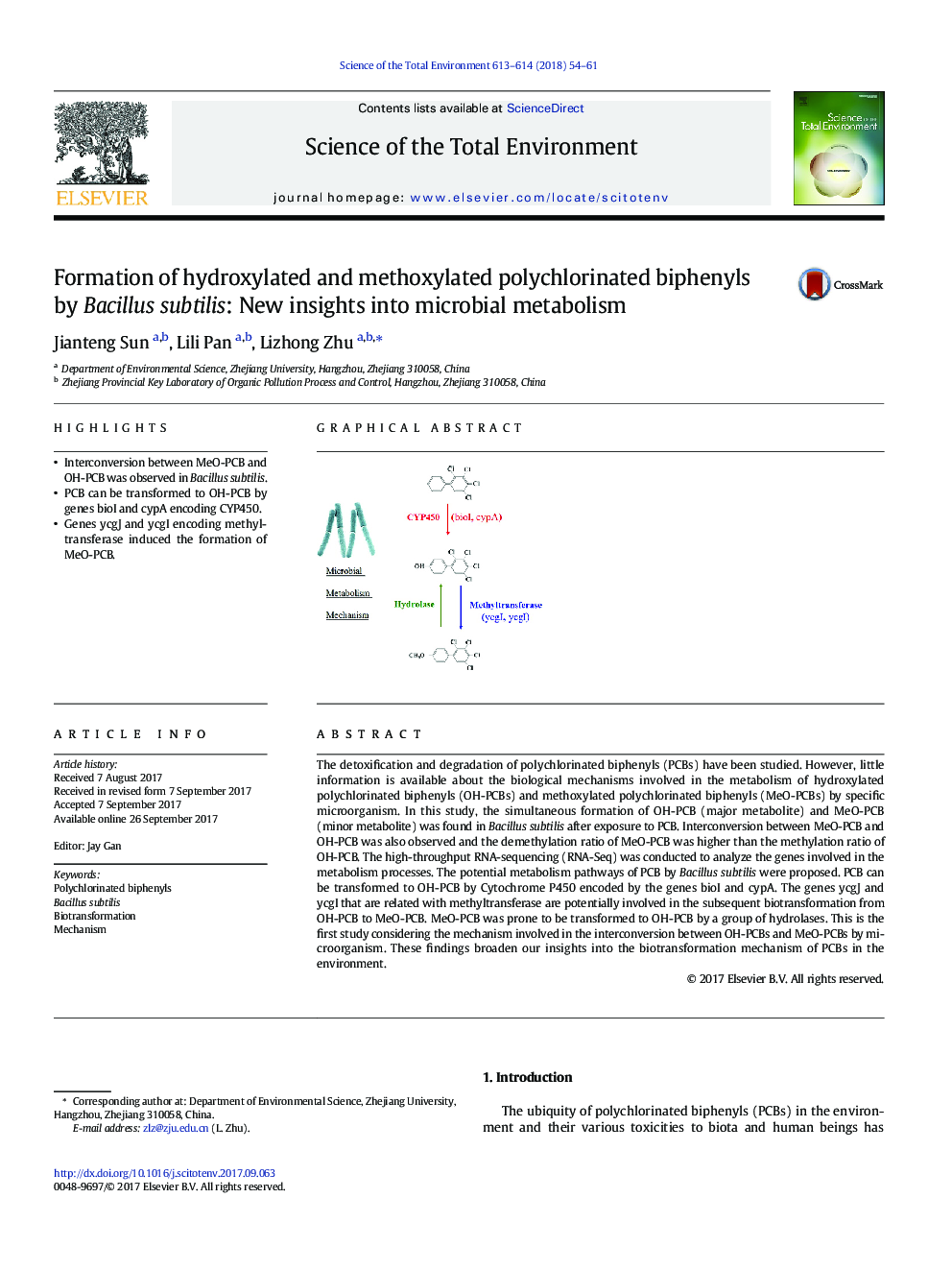| Article ID | Journal | Published Year | Pages | File Type |
|---|---|---|---|---|
| 5750066 | Science of The Total Environment | 2018 | 8 Pages |
â¢Interconversion between MeO-PCB and OH-PCB was observed in Bacillus subtilis.â¢PCB can be transformed to OH-PCB by genes bioI and cypA encoding CYP450.â¢Genes ycgJ and ycgI encoding methyltransferase induced the formation of MeO-PCB.
The detoxification and degradation of polychlorinated biphenyls (PCBs) have been studied. However, little information is available about the biological mechanisms involved in the metabolism of hydroxylated polychlorinated biphenyls (OH-PCBs) and methoxylated polychlorinated biphenyls (MeO-PCBs) by specific microorganism. In this study, the simultaneous formation of OH-PCB (major metabolite) and MeO-PCB (minor metabolite) was found in Bacillus subtilis after exposure to PCB. Interconversion between MeO-PCB and OH-PCB was also observed and the demethylation ratio of MeO-PCB was higher than the methylation ratio of OH-PCB. The high-throughput RNA-sequencing (RNA-Seq) was conducted to analyze the genes involved in the metabolism processes. The potential metabolism pathways of PCB by Bacillus subtilis were proposed. PCB can be transformed to OH-PCB by Cytochrome P450 encoded by the genes bioI and cypA. The genes ycgJ and ycgI that are related with methyltransferase are potentially involved in the subsequent biotransformation from OH-PCB to MeO-PCB. MeO-PCB was prone to be transformed to OH-PCB by a group of hydrolases. This is the first study considering the mechanism involved in the interconversion between OH-PCBs and MeO-PCBs by microorganism. These findings broaden our insights into the biotransformation mechanism of PCBs in the environment.
Graphical abstractDownload high-res image (52KB)Download full-size image
